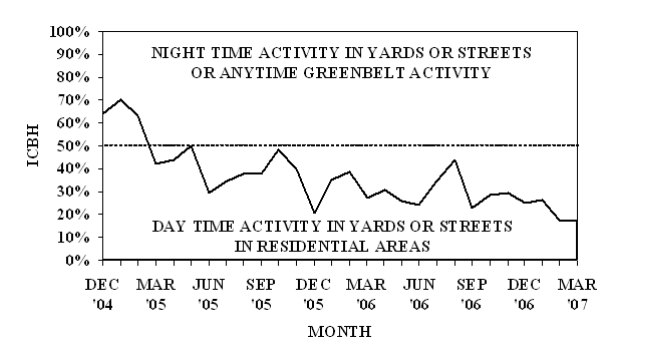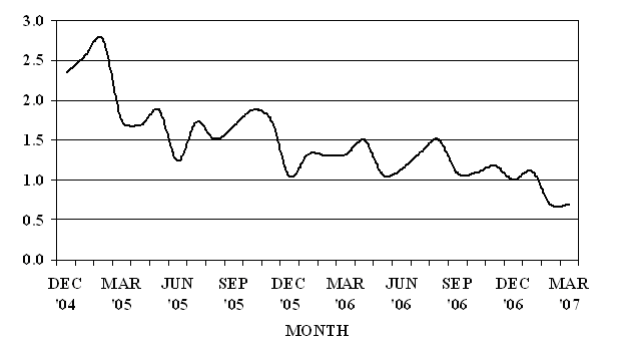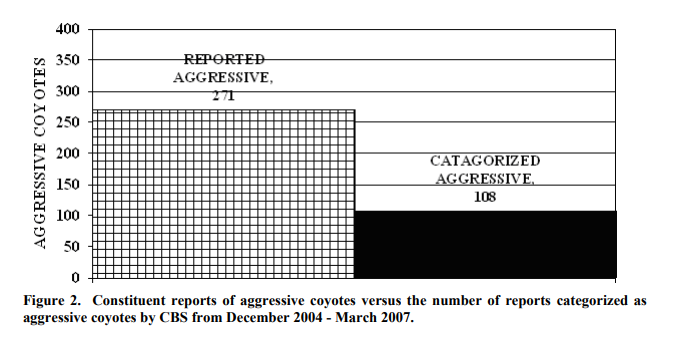Urban environments present unique challenges for wildlife management, particularly concerning the interactions between humans and adaptable species like the coyote (Canis latrans). These interactions often lead to conflicts, primarily involving risks to human safety and pets. A study by Farrar (2007) provides critical insights into the effectiveness of urban coyote management strategies, including public education and targeted removal.
Highlights of the Study
The research was conducted in Austin, Texas, where urban coyote reports were logged through a 311 non-emergency system. Observations were categorized by behavioral severity using a Coyote Behavioral Score (CBS) ranging from 0 (human-avoidant behavior) to 7 (aggressive behavior towards humans). The study tracked behavioral trends from December 2004 to March 2007.
Key Findings

- Behavioral Trends and Management Impact:
- Over the study period, indices reflecting coyote boldness and aggressive behavior (ICBH) decreased by approximately 3.5% monthly.
- The average CBS declined from 2.8 in early 2005 to 0.7 by early 2007.

- Complaint Categorization:
- Out of 1,236 logged complaints, 22% (271) were classified as involving “aggressive” coyotes. However, detailed CBS analysis revealed that most incidents involved non-aggressive behaviors, such as nocturnal sightings.

- Public Engagement:
- Public education and communication were emphasized to mitigate human-coyote interactions, reducing unnecessary lethal control measures. This approach reflected a shift towards coexistence and sustainable urban wildlife management.
Strengths and Weaknesses
One of the study’s strengths is its data-driven approach to categorize and monitor coyote behavior, allowing for targeted management responses. The CBS system provides a quantifiable way to evaluate urban wildlife threats over time. Additionally, the decline in aggressive behaviors demonstrates the efficacy of combining public education with selective removal.
However, the study faces limitations. The reliance on public reporting introduces potential biases, as not all sightings may be logged, and perceptions of threat could vary. Moreover, the long-term ecological impact of coyote removal in protected areas remains insufficiently addressed.
Farrar’s findings underscore the need for integrated management strategies that balance human safety with ecological considerations. The use of CBS-based monitoring could be adapted to other urban wildlife challenges, such as managing raccoons or feral cats.
I feel as if the study provides a valuable framework for addressing urban wildlife conflicts, combining public education, selective intervention, and rigorous monitoring. As urban areas continue to expand, such approaches are essential for fostering coexistence between humans and wildlife.
References
Farrar, R. O. (2007). Assessing the Impact of Urban Coyote on People and Pets in Austin, Travis County, Texas. Proceedings of the 12th Wildlife Damage Management Conference, 334-342.